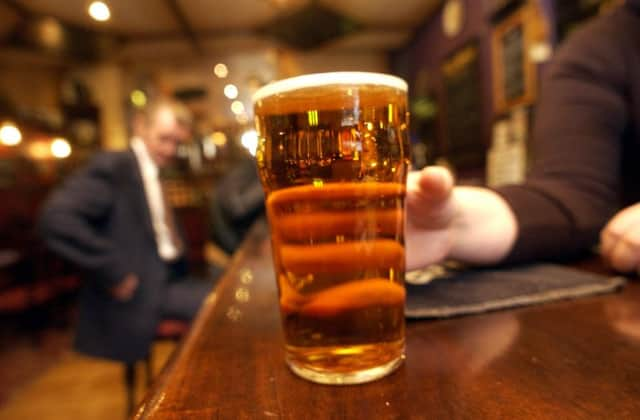Barbara O’Donnell: Together we can cut deaths from alcohol


This week, hundreds of alcohol campaigners, researchers, health professionals and policymakers from all over the world will gather in Edinburgh for the Global Alcohol Policy Conference.
The conference offers a unique opportunity to share knowledge and inspire each other to advocate for the policies that will reduce the significant harm that alcohol causes in our countries. In selecting Scotland to host the event, the Global Alcohol Policy Alliance recognised the leadership and courage shown by Scotland in pursuing minimum unit pricing as an effective policy to tackle alcohol harm.
Advertisement
Hide AdAdvertisement
Hide AdAcross the world, alcohol causes so much damage to people’s health, to the lives of their families, and to the communities we live in. Alcohol use is the world’s fifth leading risk factor for disease, injury and disability. In eastern Europe, most of Latin America and southern sub-Saharan Africa, it is the leading cause. Worldwide, alcohol causes around 3.3 million deaths annually.
Drinking levels and patterns vary considerably between countries and regions of the world. But in most regions of the world, rising alcohol consumption is a growing threat.
Generally, the greater the economic wealth of a country, the more alcohol is consumed and the smaller the number of abstainers there are. High-income countries have the highest alcohol consumption per person and the highest prevalence of binge drinking.
Europe is home to 15 per cent of the world’s population but drinks more than a quarter of the total recorded alcohol consumed worldwide. The riskiest patterns of consumption are reported in eastern Europe – in Russia, a quarter of men die before the age of 55, with alcohol the major cause.
In contrast, almost half of the global adult population has never consumed alcohol. However, even in countries with high levels of non-drinkers, consumption among those who do drink can be very high. For example, 70 per cent of people in India never drink alcohol, but those who do drink consume twice as much as UK drinkers.
Countries like China and India have seen a rapid shift in patterns and trends of alcohol use in recent years, with more young people and women starting to drink. The spread of harmful drinking practices worldwide has come about with the expansion of the global alcohol trade. Research shows that where multinational producers of unhealthy commodities are most active, there is more consumption of health-damaging products such as alcohol.
Asia, Africa and Latin America are targeted by global alcohol producers because of their young and growing populations, along with increasing disposable incomes. In these newer markets, the industry pursues a two-fold strategy of making some drinks cheap enough for all but the poorest to afford, while also pushing its premium brands as status symbols for the emerging middle class.
The World Health Organisation (WHO) reports that marketing practices which are viewed as unacceptable in Europe are used widely in Africa by alcohol companies. For example, advertising commonly makes a connection between alcohol and wealth, and cartoons are used to market their products on African television.
Advertisement
Hide AdAdvertisement
Hide AdMany developing countries lack the control strategies and treatment services to deal with the harms caused by rising alcohol consumption. As a result, the health and social consequences of drinking are most severe for those with the least resources.
The good news is that the world is waking up to the problem of increasing alcohol use and the need to implement effective controls. In 2010, the World Health Assembly endorsed the first Global Strategy on Alcohol. The strategy identifies ten priority areas for action, with the most effective interventions being action on pricing, availability and marketing.
Alcohol-related deaths and disease are not inevitable. We know what works best to prevent it. However, successful implementation of the global strategy requires sustained commitment and support from policy makers, health professionals and civil society. We look forward to welcoming everyone taking part in the Global Alcohol Policy Conference in Edinburgh. We hope that it can be a catalyst for concerted action to counter the significant health and social problems that alcohol causes around the world.
• Barbara O’Donnell is acting chief executive of Alcohol Focus Scotland